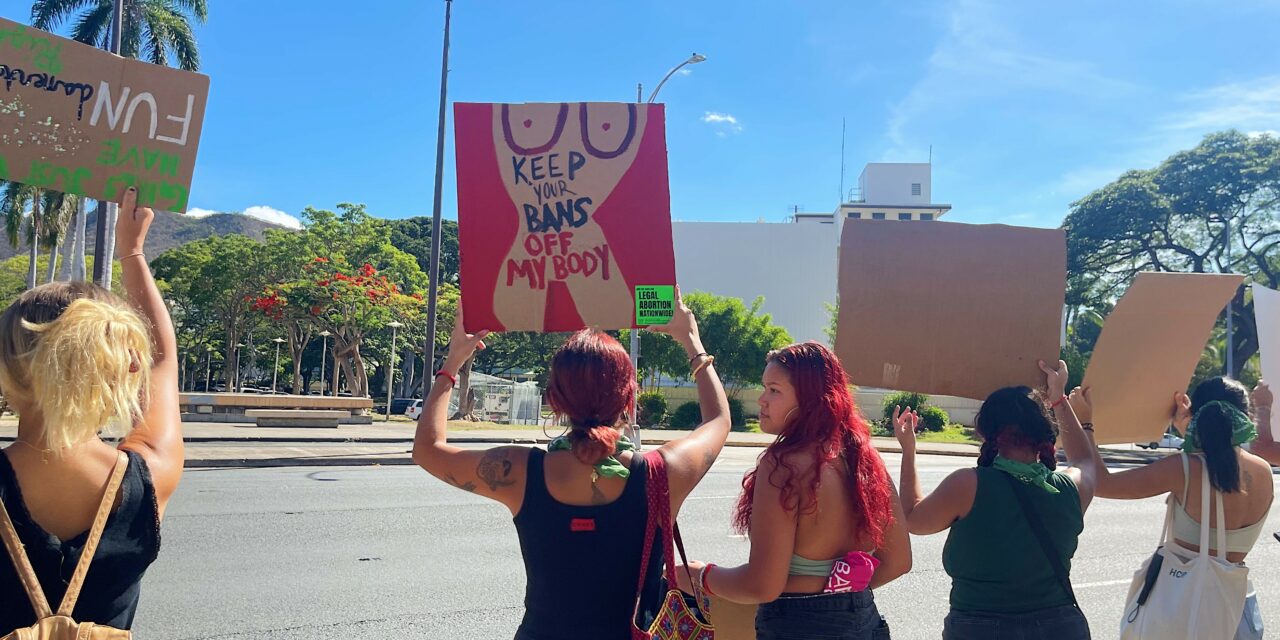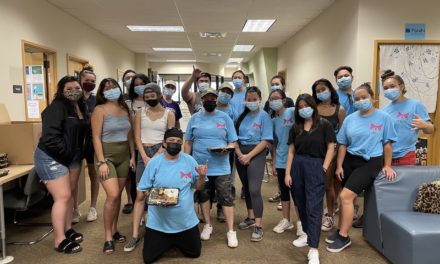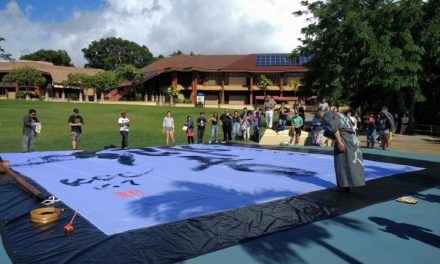Protesters wave their signs in support of abortion rights in South Beretania Street. (Photo by Juri Dagio)
By Juri Dagio | Staff Writer
“Julie” is a 30-year-old from Waikoloa Village on the Big Island who traveled to O‘ahu on Saturday to make her voice heard. The woman, a woman who asked to remain anonymous, joined nearly 100 other abortion rights protesters in front of the state Capitol.
“I’m here because obviously, I strongly believe in this [abortion rights],” she said. “I also had an abortion; I don’t think it’s right for anybody else to dictate what a woman or anybody should do with their bodies.”
Many waved signs while chanting “Not the church, not the state, women will decide their fate” to indicate the start of the march. In support of the rally, many motorists honked their horns as they passed.
Asa Enriquez, a 14-year-old student from Mililani, proudly waved her sign in the street along with her father.

Women’s March attendees rally in front of the Hawai’i State Capitol prior to the march. (Photo by Juri Dagio)
“This march is a form of solidarity,” she said. “Everyone just deserves to have the rights with their own bodies, raising a child shouldn’t be forced on anyone.”
The organizer of Rise Up 4 Abortion Rights Hawai’i, Carolyn Hadfield, 80, who has been living in Hawai’i for 60 years, discussed the importance of standing up for abortion rights. While Hawai’i has legal abortions, Hadfield said that people don’t know where and how to access it safely. Abortion providers are only located in Honolulu, on Maui, and on the Hilo side of the Big Island. So, people who are located anywhere else have to travel in order to access abortion care.
Before abortions were legalized with the Roe v. Wade Supreme Court ruling in 1973, many women resorted to painful, dangerous procedures. Hadfield knew of a friend in the 1950s do just that.
“A young friend of mine thought she was pregnant by her father … she gave herself an abortion with a large stick causing her to bleed quite heavily,” Hadfield said. “The trauma was there of what it means for women to not get an abortion.”
Due to financial hardships, Hadfield wasn’t able to attend college and also had several abortions after the birth of both of her children.
“I don’t think voting is enough, and it have to be in the streets; that is how all major rights for women have been won,” Hadfield said. “In Mexico, in Venezuela, and in Colombia, all Catholic countries ー they’ve won the rights to abortion through persistent, non-stop, sustained, non-violent protest in the streets.”
By 10:30 a.m., after the march ended, protesters gathered at the Capitol’s entrance for a discussion about abortion rights. The Supreme Court overturned Roe v. Wade on June 24, dismantling 50 years of protecting a woman’s right to abortion. Many marchers believe that people should fight for their rights ー especially their right to their bodies.
“There are large numbers of people in the streets, pretty continuously, but they have to be in the millions for it to really be won,” Hadfield said. “And so, I’m hoping that this march is a part of building sustained resistance across the United States.”






